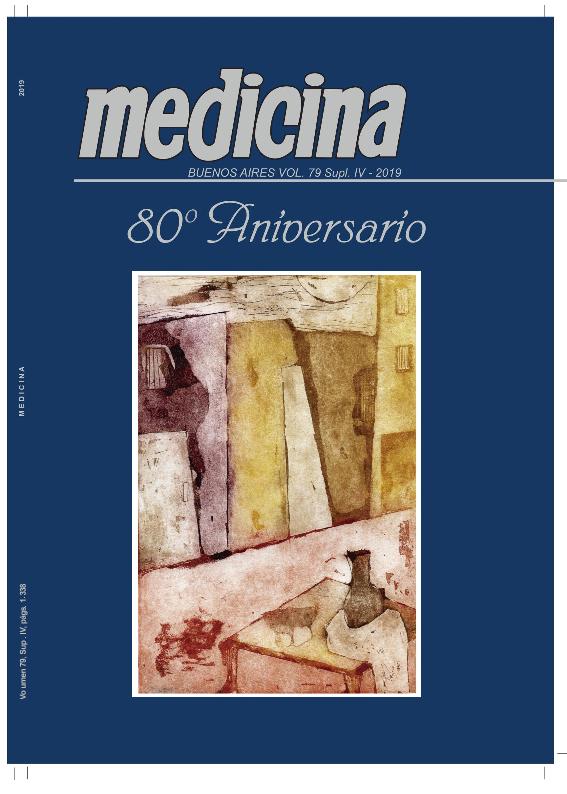Evento
Activation and modulation of the caenorhabditis elegans serotonin-gated chloride channel
Tipo del evento:
Reunión
Nombre del evento:
LXIV Reunión Anual de la Sociedad Argentina de Investigación Clínica; LI Reunión Anual de la Asociación Argentina de Farmacología Experimental; XXI Reunión Anual de la Sociedad Argentina de Biología; XXXI Reunión Anual de la Sociedad Argentina de Protozoología; IX Reunión Anual de la Asociación Argentina de Nanomedicinas y VI Reunión Científica Regional de la Asociación Argentina de Ciencia y Tecnología de Animales de Laboratorio
Fecha del evento:
13/11/2019
Institución Organizadora:
Sociedad Argentina de Investigación Clínica;
Asociación Argentina de Farmacología Experimental;
Sociedad Argentina de Biología;
Sociedad Argentina de Protozoología;
Asociación Argentina de Nanomedicinas;
Asociación Argentina de Ciencia y Tecnología de Animales de Laboratorio;
The Histochemical Society;
Título de la revista:
Medicina (Buenos Aires)
Editorial:
Fundación Revista Medicina
ISSN:
0025-7680
e-ISSN:
1669-9106
Idioma:
Inglés
Clasificación temática:
Resumen
Serotonin-gated ion channels (5-HT3) belong to the family of Cys-loop receptors, which are pentameric proteins that mediate fast synaptic transmission. In mammals, 5- HT3 are non-selective cationic channels that can be found as homomers (5-HT3A) or heteromers. The free-leaving nematode Caenorhabditis elegans is a model for the study of the nervous system and for antiparasitic drug discovery. As parasitic nematodes, C. elegans contains a homomeric serotonin-gated chloride channel, MOD-1, that modulates locomotory behavior. The absence of this receptor in vertebrates, converts MOD-1 into a potential antiparasitic drug target. We expressed MOD-1 in mammalian cells and explored by patch-clamp recordings its activation and modulation properties. Dose-response curves revealed an EC50 for 5-HT activation of about 1 µM, which is in the same range as that of human 5-HT3A receptors. The analysis of whole-cell currents determined that MOD-1 channels do not show rectification, desensitize slowly in the presence of 5-HT, and recover from desensitization with a time constant of about 1 s. In contrast to their actions at mammalian 5-HT3 receptors, 5- hydroxyindol and thymol do not potentiate MOD-1 currents. The antiparasitic drug ivermectin (IVM), which acts as activator or potentiator of different Cys-loop receptors, neither activates nor potentiates MOD-1 but pre-exposure to IVM inhibits MOD-1 currents. To gain further insights into the molecular function of the native MOD-1, we sought to identify serotonin-activated chloride channels from C. elegans neurons expressing MOD-1 and compared to MOD-1 channels heterologously expressed in mammalian cells. The understanding of the molecular pharmacology of MOD-1 contributes to our knowledge of the Cys-loop receptor family and to its potential as a novel drug target for anthelmintic therapy.
Palabras clave:
caenorhabditis elegans
,
SEROTONIN
Archivos asociados
Licencia
Identificadores
Colecciones
Eventos(INIBIBB)
Eventos de INST.DE INVEST.BIOQUIMICAS BAHIA BLANCA (I)
Eventos de INST.DE INVEST.BIOQUIMICAS BAHIA BLANCA (I)
Citación
Activation and modulation of the caenorhabditis elegans serotonin-gated chloride channel; LXIV Reunión Anual de la Sociedad Argentina de Investigación Clínica; LI Reunión Anual de la Asociación Argentina de Farmacología Experimental; XXI Reunión Anual de la Sociedad Argentina de Biología; XXXI Reunión Anual de la Sociedad Argentina de Protozoología; IX Reunión Anual de la Asociación Argentina de Nanomedicinas y VI Reunión Científica Regional de la Asociación Argentina de Ciencia y Tecnología de Animales de Laboratorio; Buenos Aires; Argentina; 2019; 207-207
Compartir




